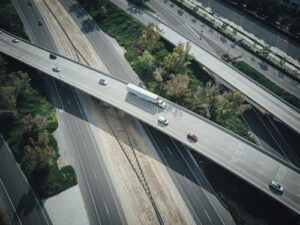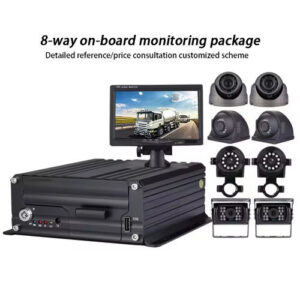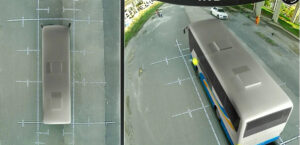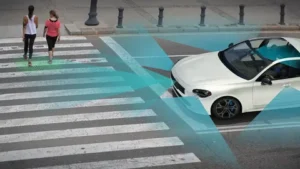In today’s bustling urban landscapes, finding a parking spot can often feel like navigating a labyrinth. The frustration of circling crowded lots or garages is a familiar experience for many drivers. However, the advent of smart parking technology is transforming this everyday challenge into a seamless, efficient process. This blog post looks at the new ideas that are changing how car parking is managed. These ideas are making car parking more efficient, using less space, and improving the overall driver experience.
We will examine how data analytics and new solutions are making parking easier, give drivers practical tips on how to use parking areas better, and examine ways to be more sustainable and new trends that are making parking management more green and efficient. Whether you’re a frequent commuter or a business owner looking to optimize your parking facilities, this exploration will offer insights into the transformative power of smart parking technology and its role in shaping the future of urban mobility.
The rise of smart parking technology: Navigating the digital revolution in car parking
In the fast-paced world of urban mobility, the rise of smart parking technology is transforming the way we manage and experience car parking. One of the most groundbreaking advancements in this realm is the implementation of smart sensors and cameras that detect available parking spaces in real-time. These innovative systems provide drivers with up-to-the-minute information, significantly reducing the time spent circling for a spot and enhancing overall efficiency. By using these sensors with advanced algorithms, parking management systems can change the availability of spaces quickly. This makes sure that drivers always go to the closest open space.
Another key component of the smart parking revolution is the proliferation of mobile applications designed to streamline the parking process. These apps not only guide drivers to available spots but also enable contactless payment options, eliminating the need for cash or physical tickets. With a few taps on their smartphones, drivers can reserve a spot in advance, pay for their parking time, and even extend their stay remotely. This easy way to use technology in parking makes it easier and less likely to stay longer and get fines.
Automated parking systems are also becoming popular. They offer a futuristic solution that makes it unnecessary for drivers to park their cars in the real world. These systems use advanced robotics and automated guided vehicles (AGVs) to park cars in optimized patterns, maximizing space utilization. Drivers just drop off their cars at a place, and the system takes care of the rest. It makes sure that each car is parked well and gets back quickly when asked. This not only saves time but also reduces the risk of accidents and damage to vehicles.
Furthermore, the integration of smart parking solutions with broader traffic management systems optimizes parking availability and reduces congestion. By sharing real-time data on parking and traffic flow, these connected systems can change traffic signals and parking rules to reduce congestion and improve overall traffic flow. This holistic approach to parking management ensures that both drivers and city planners benefit from a more efficient and sustainable urban environment.
Lastly, the role of data analytics in understanding parking patterns and trends cannot be overstated. By analyzing historical data and real-time information, parking management systems can identify peak hours, popular spots, and underutilized areas. This insight enables better decision-making, such as adjusting parking rates, optimizing space allocation, and implementing demand-based pricing strategies. Data analytics is the backbone of smart parking technology. It helps make the technology better and makes parking as easy and painless as possible.
Parking made practical: Innovative solutions for efficient space utilization
Car parking systems are changing a lot because of new technologies that are changing how we park our cars. One of the most impactful advancements is the use of sensor-based systems. These systems employ smart sensors and cameras to detect available parking spots in real-time, guiding drivers directly to open spaces. This not only saves time walking around parking lots, but also reduces congestion and fuel waste. This makes the parking experience more efficient and environmentally friendly.
Mobile applications are another powerful tool in the arsenal of modern car parking management systems. These apps allow drivers to reserve parking spaces in advance, ensuring that they have a guaranteed spot when they arrive. This feature is particularly beneficial in high-demand areas where parking can be scarce. By enabling drivers to plan, these apps help to streamline the parking process and reduce stress. Additionally, many of these apps offer contactless payment options, further enhancing convenience and safety.
Automated parking systems are also gaining traction to enhance both safety and efficiency. These systems utilize robotics to park cars without the need for human intervention. By automating the parking process, these systems can optimize space utilization and reduce the risk of accidents caused by human error. This is particularly valuable in urban areas where space is at a premium. Vertical parking solutions, like garages with many levels and car elevators, are another new way to use up space in busy areas. These solutions allow for the stacking of vehicles, significantly increasing the number of parking spots available in a given area.
Dynamic pricing strategies are another key component of efficient car parking management systems. These strategies adjust parking fees based on demand, encouraging drivers to park in less congested areas. By incentivizing drivers to choose alternative parking locations, dynamic pricing helps to distribute traffic more evenly, reducing overall congestion. This approach not only benefits drivers but also contributes to the broader goal of creating more efficient and sustainable urban environments.
Navigating the maze: Tips for drivers to park smarter and faster
Efficiently navigating a crowded parking lot can be a daunting task, but with the right approach, drivers can significantly streamline their experience. Understanding the layout of the parking area is the first step. Familiarize yourself with the entrance and exit points, as well as the flow of traffic. Many modern parking management systems offer mobile applications that provide real-time maps and available space indicators, making it easier to plan your route.
Choosing the right parking spot is crucial for both convenience and safety. Opt for spaces that are well-lit and close to exits or high-traffic areas to minimize the risk of theft or accidents. When possible, select a spot that allows you to pull through, so you can drive forward when leaving. This not only saves time but also reduces the risk of backing into other vehicles or pedestrians. Additionally, parking considerately includes leaving sufficient space between vehicles to allow for easy maneuvering and access for all drivers.
Parking smartly also involves being mindful of others. Avoid double-parking or blocking access to other vehicles, as this can cause unnecessary delays and frustrations. Always ensure that your vehicle is properly aligned within the designated space to maximize the utilization of the parking area. Consider using parking sensors or rearview cameras, which are increasingly common in modern vehicles, to assist with precise positioning.
Before leaving your vehicle, take essential safety measures. Ensure that all windows are fully closed and that no valuable items are left in plain sight. Double-check that your vehicle is properly locked, and if you’re using a mobile app for parking, confirm that your session has been initiated correctly. These simple steps can help prevent theft and ensure a smooth return to your vehicle.
Implementing these practical tips can transform your parking experience, making it smoother and more efficient. By knowing the layout, choosing the right spots, parking carefully, and taking safety steps, drivers can easily navigate the parking maze.
Sustainable solutions: Green initiatives in car parking management
In the quest for more efficient and eco-friendly car parking management systems, the integration of sustainable practices has become increasingly vital. One of the most significant advancements in this area is the installation of electric vehicle (EV) charging infrastructure. By equipping parking facilities with EV charging stations, parking operators not only cater to the growing number of electric vehicle owners but also promote green transportation, reducing overall carbon emissions.
Another key aspect of sustainable car parking management systems is the implementation of intelligent lighting systems. These systems are designed to adapt to occupancy levels and natural light conditions, ensuring that energy is used efficiently. By dimming or turning off lights when they are not needed, parking facilities can significantly reduce their energy consumption and carbon footprint. Additionally, water management techniques such as rainwater harvesting and using permeable pavement are gaining traction. These methods help to minimize runoff, reduce the strain on water systems, and contribute to a more sustainable environment.
Encouraging carpooling and ride-sharing is another effective strategy for reducing the environmental impact of parking facilities. By incentivizing drivers to share rides, the number of vehicles on the road can be significantly reduced, leading to lower emissions and less congestion. Lastly, the installation of solar panels on parking structures is a powerful way to generate renewable energy. These solar panels can offset a significant portion of the electricity consumption of the parking facility, making it more self-sufficient and environmentally friendly. By using these sustainable practices, parking operators can improve their car parking management systems and help the environment.
The future of parking: Exploring emerging trends and technologies
The future of parking is not just about where to leave your car; it’s about how technology is fundamentally changing the way we think about and manage our parking spaces. Emerging trends and technologies are set to revolutionize the car parking management system, making it more efficient, sustainable, and user-friendly. One of the most significant developments on the horizon is the rise of autonomous vehicles. These self-driving cars are poised to influence the design and functionality of parking facilities dramatically. Autonomous vehicles can park themselves in tighter spaces, reducing the overall footprint of parking lots and garages. This not only optimizes space but also allows for more creative and flexible designs that can accommodate other urban needs.
Artificial intelligence (AI) is another game-changer in the parking industry. AI-driven systems can dynamically manage parking spaces to reduce congestion and improve overall efficiency. By looking at real-time data, these systems can predict peak hours, change prices quickly, and guide drivers to available spots. This will reduce the time spent looking for a place to park. This level of optimization not only benefits drivers but also helps in managing traffic flow more effectively, contributing to a smoother urban mobility experience.
In addition to AI, the integration of eco-friendly power sources is becoming increasingly important for creating sustainable parking solutions. Electric vehicle (EV) charging stations are becoming more common. Parking facilities are looking into ways to use renewable energy sources like solar panels. These initiatives not only reduce the carbon footprint but also attract environmentally conscious drivers. Smart sensors play a crucial role in providing real-time data for optimized parking management. These sensors can detect the presence of vehicles, monitor usage patterns, and communicate this information to a central management system. This data-driven approach enables better decision-making and enhances the overall parking experience by ensuring that spaces are used efficiently and effectively.
Furthermore, the potential of blockchain technology to enhance security and streamline transactions within parking systems cannot be overlooked. Blockchain can provide a secure and transparent way to manage payments, reservations, and user data, ensuring that the entire process is tamper-proof and reliable. This level of security is particularly important as parking systems become more integrated with other urban infrastructure and services. As these technologies keep improving, car parking management systems will become more smart, flexible, and sustainable. This will lead to a future where parking is no longer a hassle but a natural part of the city’s experience.






